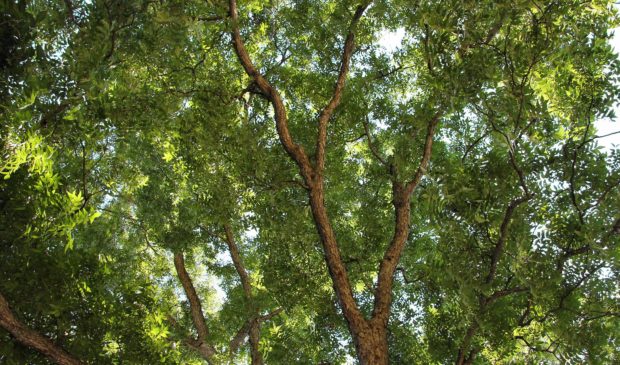Land use code to protect transit-oriented trees and increase canopy cover
Monday, February 24, 2020 by
Ryan Thornton A recent amendment to the draft Land Development Code could change how heritage tree preservation impacts new development on corridors.
Council Member Paige Ellis offered a concept last week, the Supplemental Heritage Tree Preservation Program, that she said would help keep trees on corridors by relaxing zoning standards in exchange for preservation of a heritage tree. That way developers would not have to choose between building housing units and preserving trees.
Similar to a proposal by Council Member Jimmy Flannigan to expand the city’s Alternative Equivalent Compliance program, Ellis’ “transit-oriented trees” program would relax zoning standards like floor area ratio or height just enough to allow developers to make up for the loss in potential as a result of preserving the tree.
The city’s robust tree program allows for very few exceptions. As a whole, the Development Services Department allows a heritage tree to be removed in just 5 percent of applications.
City Council passed the amendment in an 8-3 vote, with Council members Leslie Pool, Alison Alter and Kathie Tovo opposed. As approved, the program would apply to residential lots along all Imagine Austin corridors and centers as well as the Transit Priority Network, where Ellis said it is most essential to build new housing.
Brent Lloyd, co-lead of the code rewrite team, said there could be issues with allowing administrative approval of additional entitlements.
Reduced zoning standards are typically routed through a public process via the land use commission, but the second draft land use code included a provision for the Board of Adjustment to reduce standards in cases where non-zoning requirements like tree preservation are limiting housing capacity.
As written, that option would only be available in cases where at least half of the building space is for residential use and at least 10 percent of units are income-restricted. To take advantage of the variance, applicants would need to demonstrate that the tree in question cannot or should not be transplanted.
Unlike the code’s proposal, which applied the administrative variance option only along the Transit Priority Network, Ellis’ program is intended to apply to all major corridors. At first reading in December, Ellis voted against a similar amendment from Pool largely because it proposed narrowing application of the administrative variance in favor of public process. While city arborist Keith Mars said narrowing the variance may or may not result in more tree preservation, Ellis said it could become a barrier to housing.
Based on standard practice, Lloyd said the amendment won’t be easy to include in the code draft. He said the rewrite team will still try to find a way to offer relaxed zoning standards, without necessarily involving the Board of Adjustment, in cases where tree preservation is limiting housing potential.
Pool voted against the more liberal application of the variance. Mars assured her, however, that her previous amendment for increased citywide tree canopy cover is being refined. Pool’s proposal for a “no-net loss” tree canopy policy is included in the second draft.
Lloyd said Pool’s “50-by-50” goal to reach a citywide canopy cover of 50 percent by 2050 will require additional work and may need to be taken up in a separate process. Mars said the canopy covers about 35 percent of city land today.
“The Land Development Code alone cannot achieve 50-by-50, but other initiatives in conjunction with our other citywide initiatives can certainly go in that direction,” Mars said.
The Austin Monitor’s work is made possible by donations from the community. Though our reporting covers donors from time to time, we are careful to keep business and editorial efforts separate while maintaining transparency. A complete list of donors is available here, and our code of ethics is explained here.
You're a community leader
And we’re honored you look to us for serious, in-depth news. You know a strong community needs local and dedicated watchdog reporting. We’re here for you and that won’t change. Now will you take the powerful next step and support our nonprofit news organization?











